

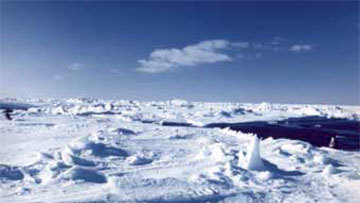


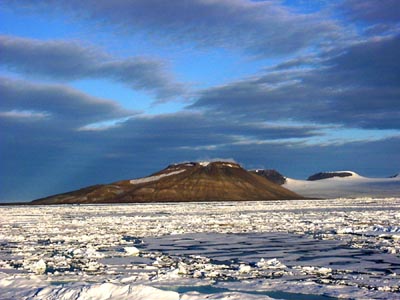

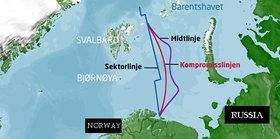 |
|---|
August 31, Russia ready for joint management of the Barents Sea
Russian wants joint mapping, joint resource management and joint development with Norway in the Border areas of the Barents Sea.
Head of the Russian state university for oil and gas, Anatoly Zolotukhin, underlines the importance of a joint development plan for the former disputed areas of the Barents Sea. In April this year a delineation agreement for the disputed areas was signed in Oslo, ending a 40 year long border dispute between Norway and Russia. |
August 30, Report about climate indicators on Svalbard and Jan Mayen
The Environmental Monitoring System for Svalbard and Jan Mayen (MOSJ) observes and describes environmental conditions in the Norwegian Arctic. A new MOSJ-report focuses on climate indicators.
The report "Status and development of climate indicators in the Norwegian Arctic" presents a thorough analysis of several climate indicators on Svalbard and Jan Mayen. Editor John Richard Hansen from the Norwegian Polar Institute summarizes the results...
|
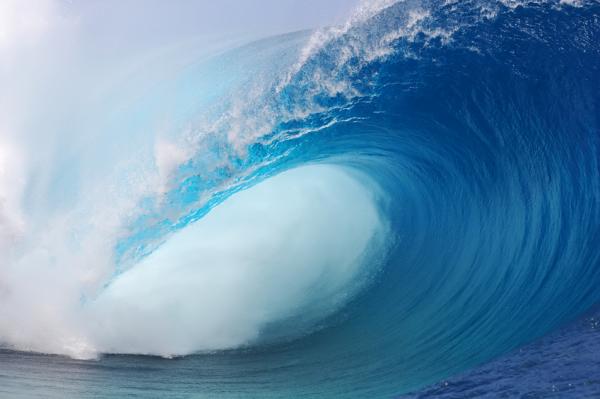 |
August 27, Sea Level to Rise Even With Aggressive Geo-Engineering and Greenhouse Gas Control, Study Finds
New findings by international research group of scientists from England, China and Denmark just published suggest that sea level will likely be 30-70 centimetres higher by 2100 than at the start of the century even if all but the most aggressive geo-engineering schemes are undertaken to mitigate the effects of global warming and greenhouse gas emissions are stringently controlled.
|
August 26, The next SAO meeting is to take place in T?rshavn
In October, the Senior Arctic Officials of the Arctic Council will meet for their fall session, this time in Torshavn, The Faroe Islands. The meeting will be an important step in the preparations for the Ministerial Meeting in Nuuk, Greenland in May 2011, which will mark the ending of the Danish Chairmanship and the starting point for Sweden as Chair of the Arctic Council.
|
August 25, Prime Minister Vladimir Putin visits Russian-German Research Station
Russia’s Prime Minister, Vladimir Putin, visited the polar research station “Samoylov” in the Lena Delta, North Siberia, to get an impression of Russian and German permafrost research in the region. Putin visited field experiments related to micrometeorology, greenhouse gas flux studies as well as palaeoclimate research. Members of the “Lena Delta 2010 Expedition”, had the unique opportunity to discuss the future of polar research in Northern Russia with the Prime Minister in person.
|
August 4, Permafrost Warming, Monitoring Improving
Permafrost warming continues throughout a wide swath of the Northern Hemisphere, according to a team of scientists assembled during the recent International Polar Year.
Their extensive findings, published in the April-June 2010 edition of Permafrost and Periglacial Processes, describe the thermal state of high-latitude permafrost during the International Polar Year, 2007-2009. Vladimir Romanovsky, a professor with the snow, ice and permafrost group at the University of Alaska Fairbanks Geophysical Institute, is the lead author of the paper, which also details the significant expansion of Northern Hemisphere permafrost monitoring. |
August 3, Radon as tracer for glacial meltwater origin
Researchers from the University of Luxembourg are the first to use radon in a study of glacier outflow.
Since september 2006 Professor Antoine Kies from the University of Luxembourg and his colleagues have been sampling meltwater from the two glaciers Werenskioldbreen and Ariebreen, close to the Polish Station in Hornsund. |
August 3, Cutting Soot Emissions May Slow Climate Change in the Arctic
A new study confirms that black carbon -- more commonly known as soot -- is a significant player in global warming.
The work by Mark Jacobson, director of Stanford University's Atmosphere/Energy program and a fellow at the university's Woods Institute, argues that cutting emissions of black carbon may be the fastest method to limit the ongoing loss of ice in the Arctic, which is warming twice as fast as the global average.
|
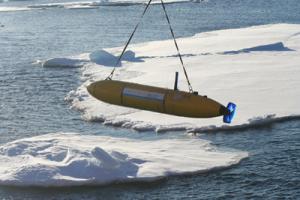 |
August 2, Polarstern Expedition: Autonomous Underwater Vehicle Dives Under the Arctic Ice
The Alfred Wegener Institute for Polar and Marine Research in the Helmholtz Association for the first time sent its Autonomous Underwater Vehicle (AUV) on an under-ice mission at about 79° North. The four-metre-long, torpedo shaped underwater vehicle was deployed from the research icebreaker Polarstern under heavy pack ice. The vehicle was subsequently recovered by helicopter.
|
July 30, NEEM Ice Coring Project Hits Bedrock in Greenland
On July 27th, scientists from the North Greenland Eemian Ice Drilling (NEEM) project made it to the bottom of the Greenland Ice Sheet at a depth of 2,537.36 metres. After five years of work, the most international ice coring effort to date (300 researchers from 14 nations) managed to retrieve ice from the warm interglacial Eemian period, 130,000 to 115,000 years ago and beyond. It was a fantastic find, as the last 2 meters of ice before hitting the bedrock contain material that has not seen sunlight for hundreds of thousands of years.
|
July 29, Russian icebreaker to carry tourists to Franz Josef Land
Russia's icebreaker Kapitan Dranitsyn will carry more than a hundred tourists to the Franz Josef Land, an archipelago in the far north of Russia, a Rosmorport company official has said.
The ship will leave the northern Russian port of Murmansk on Tuesday for a 10-day cruise, Vladimir Ivanov said. "This is not an ordinary voyage. The Kapitan Dranitsyn usually does not carry tourists on board," he said. |
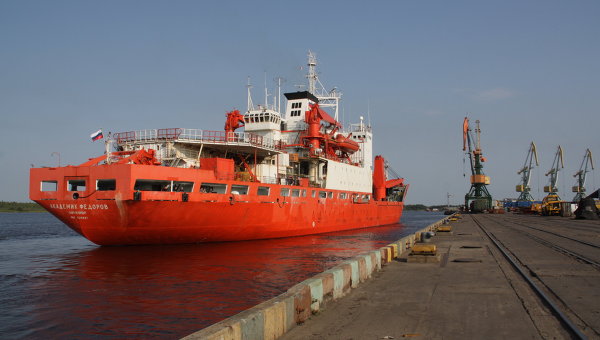 |
July 29, Russian research vessel leaves for expedition to support Arctic shelf claim
The Russian research vessel Akademik Fedorov left Arkhangelsk on Wednesday for a three-month expedition to the Arctic to ascertain the borders of Russia's continental shelf.
"The vessel's crew is reliable and comprises Russia's best specialists," said Artur Chilingarov, a Russian lawmaker and presidential envoy on Arctic and Antarctic international cooperation. "Its research is necessary to submit a claim to the UN in several years' time to prove the shelf belongs to Russia," he added. |
July 28, Unaccounted Feedbacks from Climate-Induced Ecosystem Changes May Increase Future Climate Warming
The terrestrial biosphere regulates atmospheric composition, and hence climate. Projections of future climate changes already account for "carbon-climate feedbacks," which means that more CO2 is released from soils in a warming climate than is taken up by plants due to photosynthesis. Climate changes will also lead to increases in the emission of CO2 and methane from wetlands, nitrous oxides from soils, volatile organic compounds from forests, and trace gases and soot from fires. All these emissions affect atmospheric chemistry, including the amount of ozone in the lower atmosphere, where it acts as a powerful greenhouse gas as well as a pollutant toxic to people and plants.
|
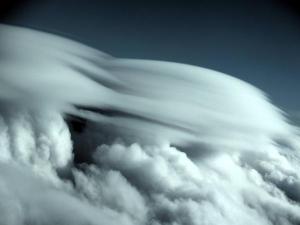 |
July 27, Amount of Dust, Pollen Matters for Cloud Precipitation, Climate Change
A lot of large particles of dust and pollen in the atmosphere may make your nose twitch, but they can lead directly to greater precipitation in clouds, Colorado State University atmospheric scientists have discovered for the first time.
|
July 26, New Map to Help Calculate Antarctic Ice Loss
High-resolution satellite images and newly developed computer software have enabled NASA researchers to create the most accurate map to date of the snaking line that marks the edge of the ice sheet covering much of Antarctica.
This is crucial for determining the rate at which the continent is losing ice. Antarctica's ice sheet is the world's largest, and holds more than 60 percent of the Earth's freshwater supply.
|
July 23, Final Instruments on NASA Climate/weather Satellite Integrated
The last of five instruments slated to fly on the upcoming NPOESS Preparatory Project (NPP) climate and weather satellite have been successfully integrated, according to NASA officials. The polar-orbiting satellite is scheduled to launch in late 2011.
|
July 23, Russian record-setting polar expedition
Participants of a Russian polar expedition reached the Arctic Circle on Tuesday in a move that was preceded by their three off road vehicles covering at least 2,000 kilometers along the dangerous Kolyma River in northeastern Siberia in the past twenty days.
The unique expedition may well make it to the Guinness Book of Records in terms of its complexity and distance covered , specialists said.
|
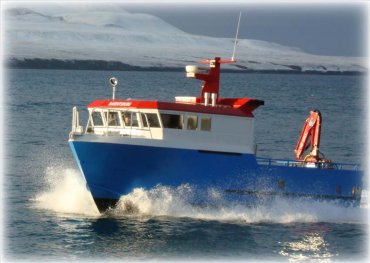 |
July 22, Workboat 'Barentsburg' - a new member of the scientific vessel pool in Svalbard
Trust Arcticugol in Barentsburg has acquired a cutter, similar to the workboat 'Teisten' in Ny-Alesund. From this summer on it can be hired for scientific and explorative purposes.
The vessel is named 'Barentsburg' and is stationed in the harbour of Barentsburg in Grenfjorden. It has a aluminium hull and a platform at the stern. It is equipped with a steel anchor, 50m mooring rope, a diving ladder, a crane, a winch and a rubber boat with outboard engine. All necessary life-saving equipment is provided and for navigation 'Raymarine' equipment is used. |
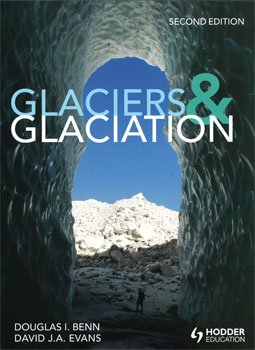 |
July 22, What we do and do not know about glaciers and glaciation
The second edition of the book “Glaciers and Glaciation” has just been published. The updated version features a lot of information about the glaciers of Svalbard. Authors are Doug Benn from the University Centre in Svalbard (UNIS) and David Evans from Durham University (UK).
|
July 21, Arctic to be ice-free in summer by 2050 - meteorologist
The Arctic will have no ice during the summer by the mid-21st century, the head of the Russian Meteorological Centre said on Tuesday.
"In 30-40 years, the Arctic may have no ice in the summertime, including the North Pole," Alexander Frolov said, quoting data from an Intergovernmental Panel on Climate Change (IPCC) report. |
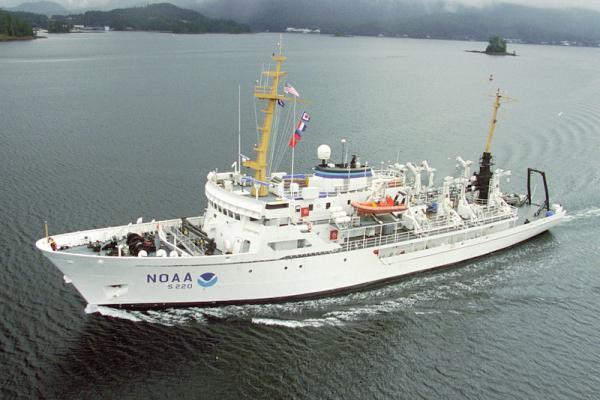 |
July 21, NOAA Ship Fairweather Maps Aid Shipping Through Bering Straits
As Arctic ice recedes, countries are looking forward to faster, safer and more efficient sea routes across the top of the world. Responding to a request from the U.S. Navy, U.S. Coast Guard, Alaska Maritime Pilots and the commercial shipping industry, NOAA sent one of its premier surveying vessels, NOAA Ship Fairweather, to detect navigational dangers in critical Arctic waters that have not been charted for more than 50 years.
|
July 20, Is the cure (geoengineering) worse than the disease (global warming)?
If there's one thing more potentially contentious than the international politics of global warming (which the world has spent at least the past 20-plus years dithering about), it's the politics of the most radical suggestion to solve it: geoengineering. After all, he who controls Earth's thermostat may well control Earth. And what's good for one nation (Bangladesh and its shoreline prefer today's climate, fearing sea level rise under a warmer one) may not be good for another (Russia might enjoy a balmier Arctic Circle).
|
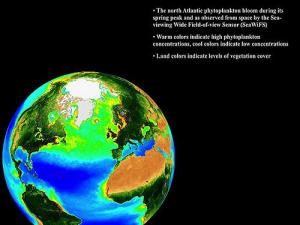 |
July 19, Old Theory of Phytoplankton Growth Overturned, Raise Concerns for Ocean Productivity
A new study concludes that an old, fundamental and widely accepted theory of how and why phytoplankton bloom in the oceans is incorrect.
|
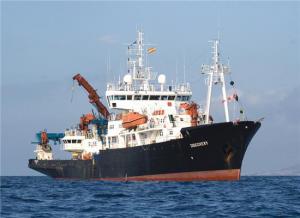 |
July 16, Scientists Assess Impact of Icelandic Volcanic Ash on Ocean Biology
An international team of oceanographers investigating the role of iron on ocean productivity in the northerly latitudes of the Atlantic Ocean will assess the impact of ash from the recent Icelandic volcano eruption on ocean biology. The five-week expedition started out on July 4, 2010.
|
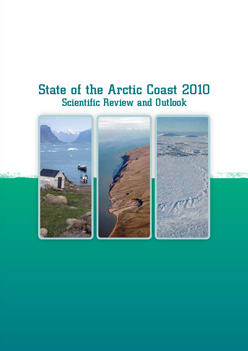 |
July 16, State Of The Arctic Coast 2010 (Scientific review and outlook)
The Arctic coastal interface is a sensitive and important zone of interaction between land and sea, a region that provides essential ecosystem services and supports indigenous human lifestyles; a zone of expanding infrastructure investment and growing security concerns; and an area in which climate warming is expected to trigger landscape instability, rapid responses to change, and increased hazard exposure.
|
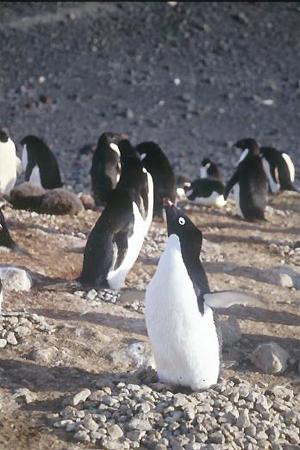 |
July 15, Penguin Males with Steady Pitch Make Better Parents
How does a female penguin choose a mate? Courtship calls help females decide which males are likely to be devoted dads, says a study in the journal Behaviour.
Antarctic penguins come on land for just a few short months each summer to breed and raise their chicks. Raising a family in the coldest place on earth is no small feat. Adelie penguins pull it off by tag-team parenting, the researchers explained. Males and females take turns incubating the eggs and guarding the chicks while their mate forages for food. |
July 14, Identifying Fast Ice in Antarctica
A new model developed by PhD student Alex Fraser from the Institute for Marine and Antarctic Studies and the Antarctic Climate and Ecosystems Cooperative Research Centre (ACE CRC) in Australia could help scientists gain better insight into the extent and variability of fast ice (stationary sea ice attached to the continent or grounded icebergs). The new model, which has the ability to detect changes in Antarctic fast ice as well as the physical impacts of fast ice on glaciological processes, will also help in the study of the biological impacts of fast ice.
|
July 13, Sunny Skies over the Arctic in Late June 2010
Clear skies in late June 2010 provided plenty of unfiltered sunlight to melt snow and ice in the Arctic. Arriving at roughly the same time as the Northern Hemisphere’s summer solstice, the conditions meant that unfiltered sunlight would reach the Arctic’s land and sea surfaces at a time of near round-the-clock daylight.
This Arctic mosaic is composed from several passes of the Moderate Resolution Imaging Spectroradiometer (MODIS) on NASA’s Aqua satellite on June 28, 2010. The brightest spot in the image is Greenland, covered in snowy white. West and north of Greenland, sea ice appears pale gray-blue. Clouds, some translucent and some opaque, occur throughout the scene, distinguished from sea ice by their lighter color, rougher texture, and less distinct margins. Clouds appear most prevalent north and west of Scandinavia, and between Alaska and the Russian Federation, but wide expanses of land and sea surface show through cloud-free areas. Most of the Arctic Circle (marked by a faint circle) is cloud-free. |
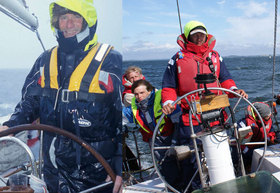 |
July 12, Norwegian, Russian race around the North Pole
One Russian and one Norwegian sailing yacht will this summer try to be the first to sail both the North East and North West Passage in one season.
|
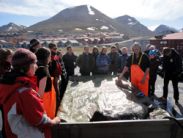 |
July 12, Another Successful Interdisciplinary and International IPY Field School
For the previous three weeks 25 international students from 13 different countries and a range of scientific backgrounds have adventured in the Arctic. They attended the second interdisciplinary IPY field school held in Svalbard, which follows the success of the inaugural field school held in 2009. The focus of the field school has been on environmental and climatic change in the Arctic, with particular emphasis on how the IPY 2007-2009 has furthered our understanding. Coupled with lectures held at the University Centre in Svalbard (UNIS), the students completed field work/excursions in and around Longyearbyen, examining, not exclusively, the biology, geology, and permafrost of Svalbard.
|
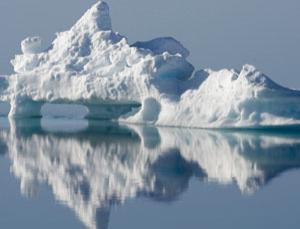 |
July 9, Soaring Arctic temperatures – a warning from history
With carbon dioxide levels close to our own, the Arctic of the Pliocene epoch may have warmed much more than previously thought – and the modern Arctic could go the same way.
At that time, CO2 levels are thought to have been close to current levels – around 390 parts per million – but global temperatures were around 2 to 3 °C warmer than today. It was the last warm period before the onset of the Pleistocene glaciation, and is used by climate researchers as a model for our future climate. |
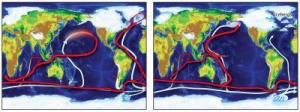 |
July 9, North Pacific: Global Backup Generator for Past Climate Change
Toward the end of the last ice age, a major reorganization took place in the current system of the North Pacific with far-reaching implications for climate, according to a new study published in the July 9, 2010, issue of Science by an international team of scientists from Japan, Hawaii, and Belgium.
|
July 8, High Above the Earth,
Satellites Track Melting Ice
The surest sign of a warming Earth is the steady melting of its ice zones, from disappearing sea ice in the Arctic to shrinking glaciers worldwide. Now, scientists are using increasingly sophisticated satellite technology to measure the extent, thickness, and height of ice, assembling an essential picture of a planet in transition.
|
July 8, America’s Heavy Icebreakers Are Both Broken Down
The warnings have mounted for half a decade. The United States, despite having substantial scientific operations in Antarctica and seeing ever more activity in its Arctic waters, has been relying on a pair of aging, decades-old heavy icebreakers to maintain mobility in ice-cloaked seas.
|
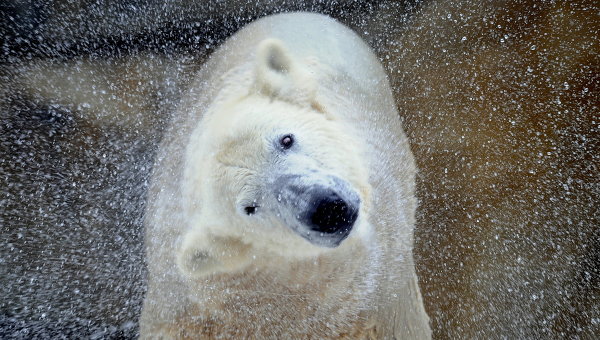 |
July 7, Russia approves strategy for polar bear preservation - ministry
Russian Minister of Natural Resources and Ecology Yury Trutnev has approved a strategy for polar bear preservation in Russia, according to a statement published on Tuesday.
The ministry's statement said the strategy aims to determine the mechanisms of preserving animal populations in the Russian Arctic and reduce the negative impact of human activity in their habitats. |
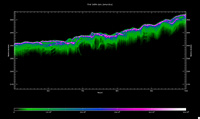 |
July 6, CryoSat-2 exceeding expectations
Today, participants at the Living Planet Symposium have been hearing about ESA's most recently launched mission, CryoSat-2. In orbit for almost three months, the satellite is in excellent health with scientists very encouraged by the first ice-thickness data presented at the symposium.
Prof. Duncan Wingham, Lead Investigator for the CryoSat mission, stated, "The satellite is in very good shape – exceeding in-orbit specifications, the ground segment software is fine, the system of data distribution looks good and we are excited by the quality of data being received. |
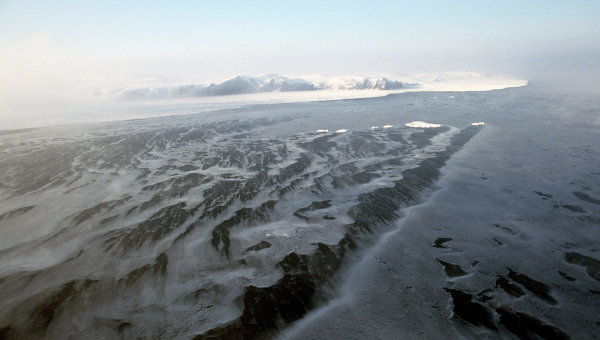 |
July 5, Russia, Canada seek joint Arctic space monitoring project
Russia and Canada will start negotiations on the integration of their national space systems to monitor the Arctic, a Russian space official said on Tuesday.
Anatoly Shilov, deputy head of the Federal Space Agency, Roscosmos, said the first Russian-Canadian meeting was scheduled for August. "We are currently discussing which services will be provided by Russian satellites and which by Canadian satellites," he said. |
July 5, NASA, NOAA eye Russian UAVs for Arctic studies
U.S. scientists are interested in using Russian unmanned aerial vehicles (UAV) for joint Arctic research projects, a Russian official said on Friday.
Vladimir Sokolov, chief of an Arctic expedition run by a research center affiliated with the Russian Federal Service for Hydrometeorology and Environmental Monitoring, said drones were successfully used to study atmospheric fluctuations that denote if the surface is water or ice. |
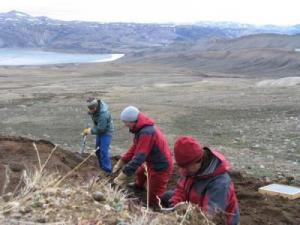 |
July 5, Arctic Climate May Be More Sensitive to Warming Than Thought, Says New Study
A new study shows the Arctic climate system may be more sensitive to greenhouse warming than previously thought, and that current levels of Earth's atmospheric carbon dioxide may be high enough to bring about significant, irreversible shifts in Arctic ecosystems.
|
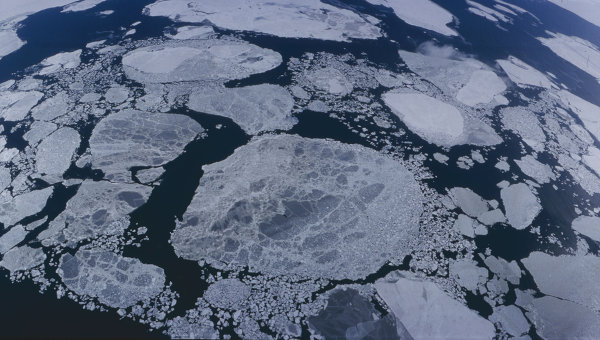 |
June 23, Moscow to host international Arctic forum in September
An international Arctic forum, delayed when the eruption of a volcano in Iceland froze air travel in much of northern Europe, will be held in Moscow on September 22-23, forum organizers said on Monday.
The forum, entitled "The Arctic: Territory of Dialogue," was initially scheduled for April 2010, but had to be postponed following the eruption of the Eyjafjallajokull volcano in Iceland, which prevented many international participants from coming to Moscow. |
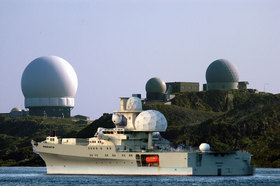 |
June 23, Norway continues High North espionage
The Norwegian high-tech intelligence in the north, directed towards what the Russians are doing, is still the most important part of Norwegian espionage, according to the Norwegian daily Aftenposten.
Although the Norwegian military intelligence today is characterized by more active espionage in war-zones where Norwegian soldiers are involved, the activity in the north is still of high priority. |
June 22, Researchers to be held accountable
The University of Tromso has become the first in Norway to mount a study of what its researchers are doing, and intends to hold them accountable. University officials want to see a sharp increase in the amount of their material that gets published.
The old saying “publish or perish” may be taking on new meaning at the university in northern Norway. Fully 20 percent of its researchers haven’t published anything in the past four years, while another 20 percent have published very little. |
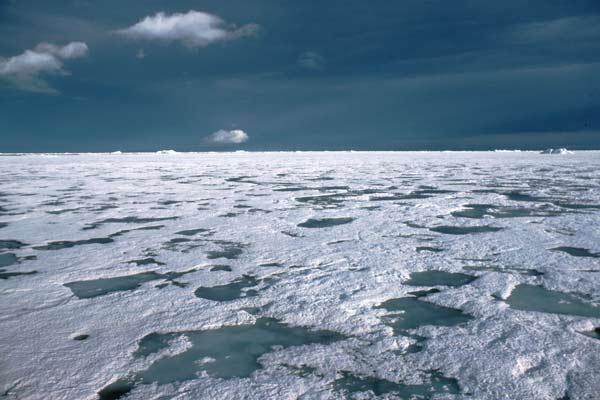 |
June 21, Antarctic Sea Ice Paradoxically Growing
While Arctic sea ice continues to shrink as the world warms, the ice around Antarctica is actually growing, thanks to the influence of the ozone hole over the southernmost continent, scientists have reported.
But the south polar growth won't be permanent, they warn.
Though they are headed in opposite directions, the current conditions at both poles are affected by human impacts on the climate, said John Turner of the British Antarctic Survey, who presented these findings to the International Polar Year (IPY) conference held last week in Oslo, Norway. |
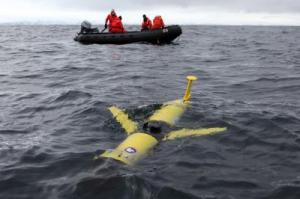 |
June 18, Scientists Call for a New Strategy for Polar Ocean Observation
In a report published in Science, a team of oceanographers, including MBL (Marine Biological Laboratory) Ecosystems Center director Hugh Ducklow, outline a polar ocean observation strategy they say will revolutionize scientists' understanding of marine ecosystem response to climate change. The approach, which calls for the use of a suite of automated technologies that complement traditional data collection, could serve as a model for marine ecosystems worldwide and help form the foundation for a comprehensive polar ocean observation system.
|
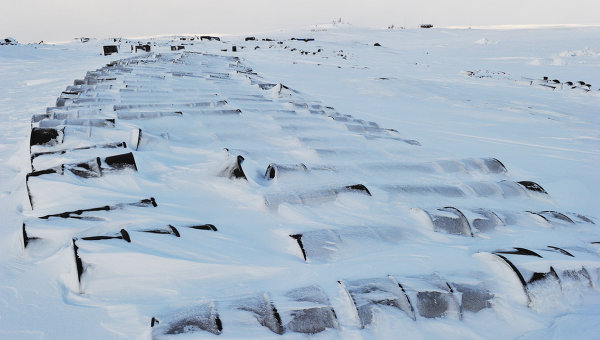 |
June 18, Arctic Ocean clean-up to cost $40 million - ecology minister
Franz Josef Land and the Northern Sea route clean-up program, which is to start in 2011, will require 1.2 billion rubles ($40 million), the Russian minister of natural resources and ecology said on Wednesday.
"The cost of the project is estimated at 1.2 billion rubles, front-end engineering demands 110 million [rubles]," Yuri Trutnev said. |
June 17, New Science Plan for Ny-Alesund effective since 12 June
The science plan for Kongsfjorden International Research Base (KIRB) has been revised and is now available on the web.
In 2006, the first science plan for the Kongsfjorden International Research Base (KIRB) has been developed by the Norwegian Polar Institute upon request by the Research Council of Norway in a transparent process involving all international research partners in Ny-?lesund. It was valid until 2010 and now a revised version has been made effective since 12 June 2010. The current version is valid for the period 2010-2013 and was endorsed by the Ny-?lesund Science Managers Committee and adopted by Svalbard Science Forum |
June 17, Russia to explore continental shelf this summer
In July Russian Polar scientists will conduct a larger study of the Arctic continental shelf as part of the program “Boundaries of the Russian continental shelf”. The program is aimed at securing Russia’s right to the natural resources in the Arctic, RIA Novosti reports.
|
June 16, Deep Ocean Floor Research Yields Promising Results for Microbiologists
Research by microbiologists is revealing how marine microbes live in a mysterious area of the Earth: the realm just beneath the deep ocean floor. The ocean crust may be the largest biological reservoir on our planet.
|
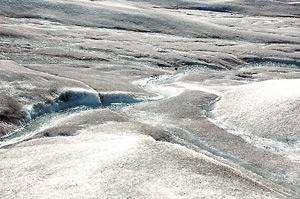 |
June 15, Are Ocean Currents Hastening the Retreat of Greenland’s Glaciers?
Since the early 1990s, glaciers in Greenland have been shrinking at an unprecedented and ever-faster pace. The well-studied mountain glaciers of Europe typically move about 50 meters a year; some of the glaciers in southeast Greenland are now moving at a rate of 38 meters (124 feet) a day.
|
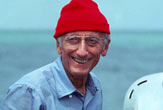 |
June 14, Jacques Cousteau Legacy Still Making a Splash
Ever since "The Silent World" hit movie screens around the world in 1956, Jacques Cousteau (1910 – 1997) and his red cap have been synonymous with ocean exploration.
Sailing around the world on his iconic ship Calypso, Cousteau captivated audiences with the unknown ocean and inspired future generations of ocean explorers. Friday marks the 100th birthday of Jacques Cousteau, whose legacy still lives on in the quest to unravel the ocean's mysteries. |
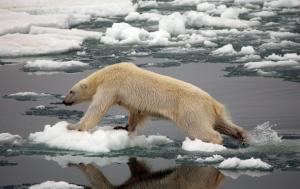 |
June 11, Rapid Changes for Arctic Flora and Fauna
Unique Arctic habitats for flora and fauna, including sea ice, tundra, lakes, and peatlands have been disappearing over recent decades, and some characteristic Arctic species have shown a decline. The changes in Arctic Biodiversity have global repercussions and are further creating challenges for people living in the Arctic.
|
June 10, Sea Levels May Rise by as Much as One Meter Before the End of This Century
Sea levels may rise by as much as one metre before the end of this century, according to new predictions. Melting glaciers may contribute more to the rise in sea levels than scientists have previously realised.
Sea levels can be expected to rise by between 0.5 and 1.5 metres before the next century, according to the report Melting Snow and Ice: A Call for Action, published by the Norwegian Polar Institute, which attracted a lot of attention at the Copenhagen Climate Change Conference in December last year. |
 |
June 10, Oslo Science Conference Celebrates the Work of the International Polar Year
Nearly 2,500 scientists, educators, and others are in Norway’s capital this week (June 8-12) to discuss the work they did during the International Polar Year (IPY) 2007-08. The Oslo Science Conference is the first gathering of people who had led projects in the polar regions and is the largest polar sciences meeting in history.
IPY involved about 60 countries and more than 10,000 scientists in research. Some 2,600 abstracts were received for the conference and 40 sessions scheduled. |
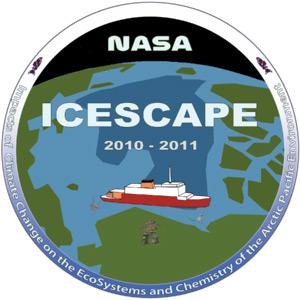 |
June 9, NASA Icebreaker Voyage to Probe Climate Change Impact on Arctic
NASA's first dedicated oceanographic field campaign goes to sea June 15 to take an up-close look at how changing conditions in the Arctic are affecting the ocean's chemistry and ecosystems that play a critical role in global climate change.
The "Impacts of Climate on Ecosystems and Chemistry of the Arctic Pacific Environment" mission, or ICESCAPE, will investigate the impacts of climate change on the ecology and biogeochemistry of the Chukchi and Beaufort seas. A key focus is how changes in the Arctic may be altering the ocean's ability to absorb carbon from the atmosphere. |
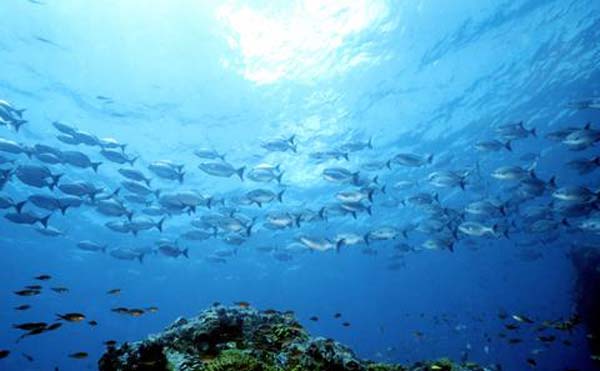 |
June 8, World's Oceans Remain Largely Mysterious
The ocean covers 70 percent of the Earth's surface, but on this World Oceans Day (June 8, 2010) scientists say they still know shockingly little about the mysterious deep blue sea.
With 95 percent of the ocean unmapped, more is known about the moon's surface than the ocean depths, said aquatic filmmaker Fabien Cousteau, grandson of ocean diving pioneer Jacque Cousteau. In fact,12 men have stepped foot on the moon, but only two have been to the Mariana Trench, the deepest part of the ocean at roughly 7 miles (11 kilometers) deep. |
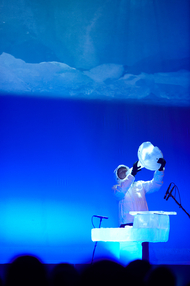 |
June 8, Warm opening of a cool conferance
2400 polar scientists and friends of polar science was touched by a children's gospel choir and mysterious music played on instruments made out of pure ice, when HRH Crown Prince Haakon officially opened the IPY Oslo Science conference this morning.
- If you want to fight poverty, it makes sense to go to the Arctic, HRH Crown Prince Haakon said in his opening speech in Oslo today. |
June 7, Russia’s Arctic expedition heads for Murmansk
Russia’s “High-Latitude Arctic” expedition is heading for the northern port of Murmansk.
Russian polar explorers, members of the “High-Latitude Arctic-2010” expedition and the crew of the icebreaker ‘Rossia’ officially closed the North Pole–37 drifting station in the Arctic on Saturday. “Over the past nine months fifteen polar explorers represented the interests of Russia and the whole mankind in the extremely harsh conditions of the Arctic,” Vladimir Sokolov, the head of the high-latitude expedition, said. |
June 7, Arctic Sea Ice at Lowest Point in Thousands of Years
The shrinking amount of sea ice that covers the Arctic Ocean today is the smallest it has been in the last few thousand years, a new study suggests.
The sea ice that normally covers huge swaths of the Arctic Ocean has been retreating and thinning over the last few decades, due to the amplified warming at the North Pole, which is a consequence of the buildup of greenhouse gases in Earth's atmosphere. |
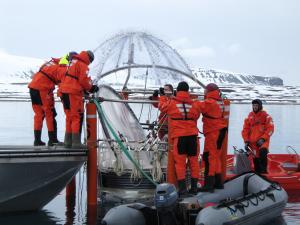 |
June 4, Ocean Acidification in the Arctic: What Are the Consequences of Carbon Dioxide Increase on Marine Ecosystems?
Carbon dioxide (CO2) emissions not only lead to global warming, but also cause another, less well-known but equally disconcerting environmental change: ocean acidification. A group of 35 researchers of the EU-funded EPOCA project have just started the first major CO2 perturbation experiment in the Arctic Ocean. Their goal is to determine the response of Arctic marine life to the rapid change in ocean chemistry.
|
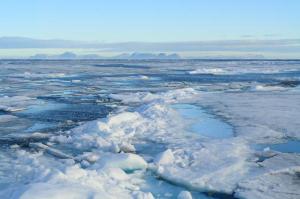 |
June 3, Arctic Ice at Low Point Compared to Recent Geologic History
Less ice covers the Arctic today than at any time in recent geologic history.
That's the conclusion of an international group of researchers, who have compiled the first comprehensive history of Arctic ice. For decades, scientists have strived to collect sediment cores from the difficult-to-access Arctic Ocean floor, to discover what the Arctic was like in the past. Their most recent goal: to bring a long-term perspective to the ice loss we see today. |
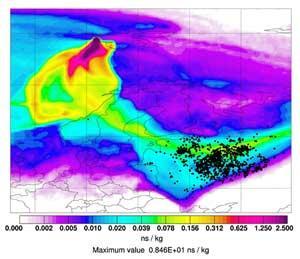 |
June 2, Record-high PCB levels over Svalbard
A new study shows that emission from forest, straw and stubble fires on the northern hemisphere causes very high concentrations of toxic PCB over Svalbard. PCB and other harmful pollution coming to the Arctic are jeopardizing the survival of Polar bears.
The content of polychlorinated biphenyl (PCB) in the soil is high many places in Eastern Europe and North America due to pollutions in earlier periods. Today, there is a ban on PCB in both Europe and North-America. |
June 2, Warmer Climate Makes Baltic More Salty, New Research Suggests
Scientists have long believed that a warmer climate will increase river runoff to the Baltic Sea, thus making the inland sea less salty. However, a new extensive study from the University of Gothenburg reveals that the effect will probably be the opposite: climate change will reduce river runoff and increase salinity in the Baltic Sea.
|
June 1, Examining Carbon ‘Burps’ that Helped End the Last Ice Age
The results of a recent study, published in the journal Science, suggest that carbon dioxide (CO2) was probably efficiently locked away in the deep ocean during the last ice age. Working on a marine sediment core recovered from the Southern Ocean seabed, the researchers radiocarbon-dated shells left behind by foraminifera (small marine creatures). By comparing the carbon-14 (14C) levels found in the shells with those contained in the atmosphere at the time, they found out how long the CO2 had been locked in the ocean.
|
May 31, Arctic Sea Ice Melt Parallels 2007 Record Low Level
Latest data from the National Snow and Ice Data Center in Boulder, Colorado, shows that Arctic sea ice is set to recede to a record low this year. Based on the center’s satellite information, ice coverage this year is equal to the record-low 2007 level.
The average extent of Arctic sea ice was 14.69 million square kilometers in April, which is just 310,000 sq. km. below the 1979 to 2000 average. The rate of decline in ice coverage for the same months was 41,000 sq. km. (16,000 square miles) daily. |
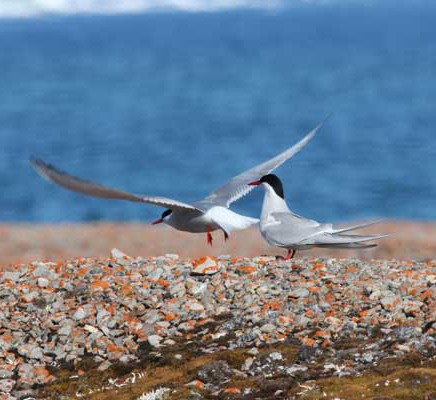 |
May 28, Coastal birds carry toxic ocean metals inland
A collaborative research team led by Queen’s University biologists has found that potent metals like mercury and lead, ingested by Arctic seabirds feeding in the ocean, end up in the sediment of polar ponds.
“Birds feeding on different diets will funnel different ‘cocktails’ of metal contaminants from the ocean back to terrestrial ecosystems, which can then affect other living organisms,” says lead author Neal Michelutti, a research scientist at Queen’s Paleoecological Environmental Assessment and Research Lab (PEARL). |
May 27, Three UNESCO departments on ecology will be established in the Russian regions on base of Research Institutes
“Three UNESCO departments on ecology will be established during a month in the Russian regions”, - informed Valery Neronov, Vice-president of International Coordination Board on UNESCO program “A man and biosphere”.
“The certificates were already obtained, and during the nearest month these chairs will be officially included to a list of Russian UNESCO departments implementing the program “A man and biosphere”, - he noted. One chair will be established in Kazan’ on the base of Institute of Ecology and Soils Problems, the second – in Puschino on the base of Puschino University and Scientific Center RAS, the third – in Postov-on-Don, which will be the first chair “UNESCO-Kusto” in Russia.
|
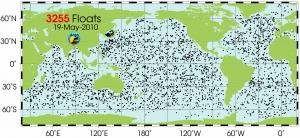 |
May 26, Ocean Stored Significant Warming Over Last 16 Years, Study Finds
The upper layer of the world's ocean has warmed since 1993, indicating a strong climate change signal, according to a new study. The energy stored is enough to power nearly 500 100-watt light bulbs per each of the roughly 6.7 billion people on the planet.
|
May 25, Oslo Science Conference Highlights Work Done by IPY Researchers
Billed as the largest polar science gathering ever, the June 8-12 Oslo Science Conference will bring researchers from 160 International Polar Year (IPY) projects together for the first time. In some 40 sessions with more than 1,000 oral presentations, researchers will discuss their work supported by the IPY in the Arctic and Antarctic.
|
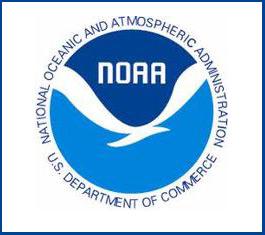 |
May 24, NOAA Seeks Public Comments on its Draft Arctic Vision and Strategy
The Arctic has profound significance for climate and functioning of ecosystems around the globe. Because the region is particularly vulnerable and prone to rapid change, NOAA must position itself to respond with quality products, services, and scientific research. To guide that effort, NOAA has developed an Arctic strategic plan and vision that will be available for public comment through June 10.
|
May 24, 2010 Warmest on Record So Far
This year is shaping up to be one of the warmest years on record so far, temperature measurements indicate.
The combined global land and ocean surface temperature was the warmest on record for both April and for the period from January through April, according to the U.S. National Oceanic and Atmospheric Administration, which has records going back to 1880.
The data suggests that 2010 will be in keeping with the recent trend of warmer-than-average years that have been linked to the heating caused by global climate change. Reports at the beginning of this year put the decade 2000 through 2009 as the warmest decade since 1880. |
May 20, Ocean's Depth and Volume Revealed
The Earth's oceans are among the most mysterious places on the planet, but scientists now have at least figured out how deep the oceans are and just how much water they hold.
A group of scientists used satellite measurements to get new estimates of these values, which turned out to be 0.3 billion cubic miles (1.332 billion cubic kilometers) for the volume of the oceans and 12,080.7 feet (3,682.2 meters) for the average ocean depth. Both of these numbers are less than many previous estimates of the ocean's volume and depth. |
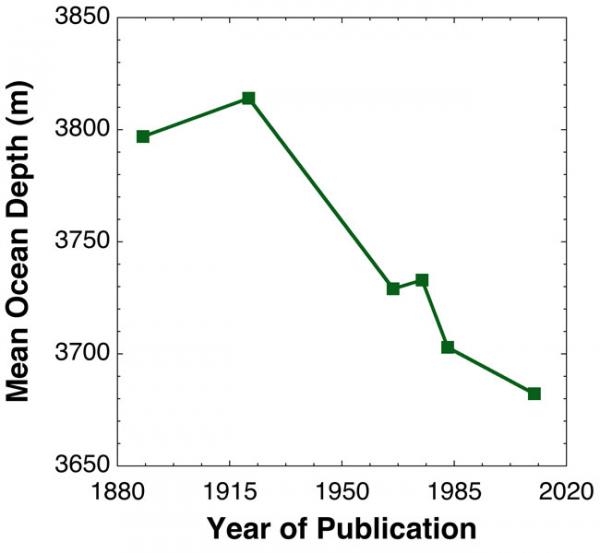 |
May 20, Volume and Depth of the World's Oceans Calculated
How high is the sky? Scientists have a pretty good handle on that one, what with their knowledge of the troposphere, stratosphere an the other "o-spheres." Now, thanks to new work headed by the Woods Hole Oceanographic Institution (WHOI), they are closing in on the other half of that age-old query: How deep is the ocean?
|
May 19, Greenland Rising Rapidly as Ice Melts
The ice is melting so fast in Greenland that the giant island is rising noticeably as the weight is lifted. In some spots, the land is rising 1 inch per year.
A vast ice cap covers much of Greenland, in some places up to 1.2 miles (2 km) thick. The ice, in place for eons, presses down the land, making the elevation at any given point lower than it would be sans ice. |
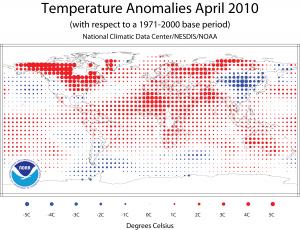 |
May 18, Warmest April Global Temperature on Record, NOAA Says
The combined global land and ocean surface temperature was the warmest on record for both April and for the period from January-April, according to NOAA. Additionally, last month's average ocean surface temperature was the warmest on record for any April, and the global land surface temperature was the third warmest on record.
|
May 18, Arctic team reports unusual conditions near Pole
A group of British explorers just back from a 60-day trip to the North Pole said on Monday they had encountered unusual conditions, including ice sheets that drifted far faster than they had expected.
The three-member team walked across the frozen Arctic Ocean to study the impact of increased carbon dioxide absorption by the sea, which could make the water more acidic and put crucial food chains under pressure. Expedition leader Ann Daniels said the ice drifted so much that they eventually covered 500 nautical miles (576 miles) rather than the 268 nautical miles initially envisaged. |
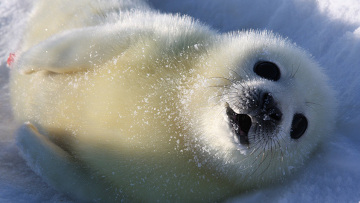 |
May 17, Ships may be piloted in the Arctic by space survey and save the white-coat seals life
“Pilotage of the ship convoys along the Northern Sea Route in the Arctic round the white-coat seal rookeries (young Greenland seals of up to 1 month age) may be performed from space”- informed Vladimir Gershenzon, the Director General of ITZ “SKANEKS” the RIA News.
According to his information the location of white-coat seal rookeries are observed from satellites. |
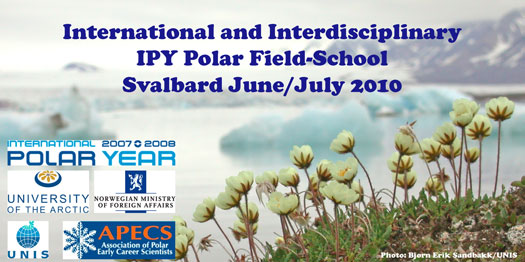 |
May 14, International Polar Field School
Objective:
To give an interdisciplinary introduction to environmental change in the Polar areas based upon past, present and future research being done in the Arctic during and after the IPY. The course will offer a unique field-training experience for internationally recruited students (undergraduate/early graduate) in a high-arctic environment, further on providing them with the latest IPY research data and information to be used for interdisciplinary project work during the field-school. Content: This course will focus on the impacts of climatic changes on the Polar regions, and students will accordingly get a general overview of topics including geology, glaciology, permafrost, oceanography, meteorology, biology, Polar social science and management/decision making in the Polar areas. The field-school will provide hands-on activities, field-work, group work and lectures covering the main topics, but also a deeper look into present polar research that was accomplished during IPY 2007-2009. |
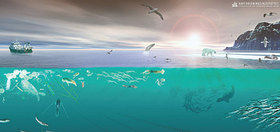 |
May 13, Wilder weather from climate change
Northern Norway should start preparing for a warmer, wilder and wetter climate, researchers from the Norwegian Polar Institute say.
|
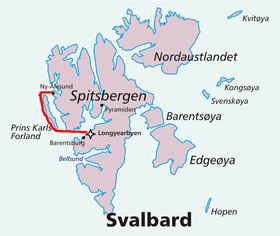 |
May 13, The world’s northernmost fiber-optic connection
The Norwegian settlement in Ny-Alesund on the northwestern part of Spitsbergen will soon have the world’s northernmost fiber-optic data connection. A project which will provide the world with easier access to important data from the observatories in Ny-Alesund.
|
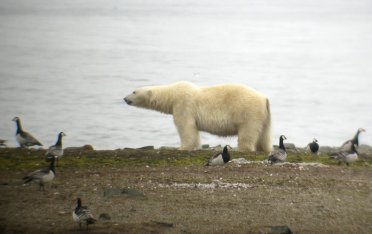 |
May 12, Local barnacle goose population suffers from polar bears
Once, offshore islands were a safe place to breed for a number of bird species. However, times are changing. Researchers from BResearch, Groningen report a dramatical increase of summer predation by polar bears.
The small offshore islands along the western coastline of Svalbard are a remarkable habitat hosting an array of bird species that seek a safe place to breed. However, times are changing. During a long-term population study on barnacle geese between Isfjorden and Bellsund, the researchers witnessed developments that might severely impair the attractiveness of these islands.
|
May 11, IPY Monthly Report: May 2010
Content: 1) Preparations and Promotions for Oslo Science Conference 2) Polar Information Commons 3) IPY Lessons Learned 4) APECS Update |
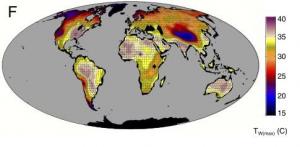 |
May 6, Global Warming: Future Temperatures Could Exceed Livable Limits, Researchers Find
Reasonable worst-case scenarios for global warming could lead to deadly temperatures for humans in coming centuries, according to research findings from Purdue University and the University of New South Wales, Australia.
|
 |
May 5, Russia to launch Arctic satellite monitoring project
Russia’s new space monitoring system, “Arktika” will help to reveal secrets of the Arctic. Four satellites will study the hard-to-reach regions around the North Pole. The first satellite of this system will be launched in three years.
The development of such a system will guarantee the implementation of Russia’s key tasks in the Arctic, said the head of the Russian Space Agency, Anatoly Perminov. |
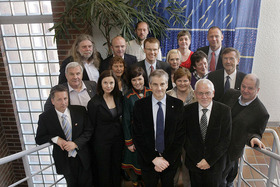 |
May 4, Norway established new High North expert group
The Norwegian Government has established a group of experts on High North issues in a bid to develop new national strategies for the region.
The new expert group was formalized during Foreign Minister Jonas Gahr Store’s visit to the Arctic city of Tromso last week. The trip was held immediately after the historical meetings with Russian President Medvedev and Foreign Minister Sergey Lavrov in Oslo last week. |
May 4, Northern Russia Wind Patterns Major Factor in Arctic Sea Ice Loss
While the ice cover has consistently receded in recent years, climate change might not be the only one to blame, Norwegian researchers say. Although there have been significant changes, the researchers believe that changes in air circulation patterns create winds that might push away the ice.
|